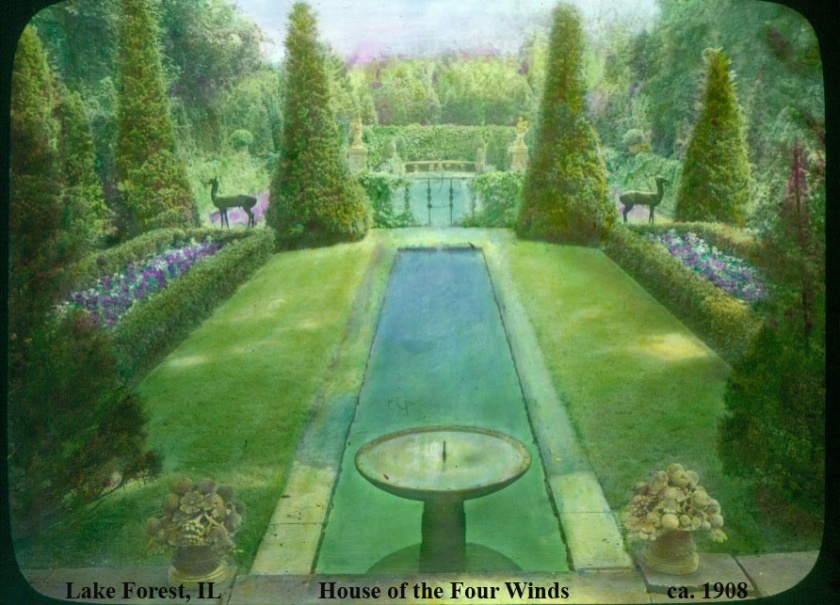
Animal Figurine (Untitled)
Giorgio Sommer, foundry of (1834-1914)
Created: Naples, Italy, late nineteenth to early twentieth century
Material: bronze
Dimensions: 6.5″ x 5.25″ x 1.938″
On display at the Nichols House Museum
To see this object in the Nichols House Museum online collection, search for 1961.493 here: http://nicholshouse.pastperfect-online.com/36637cgi/mweb.exe?request=ks
Rome, June 5, 1931
The [boat] landed us at Naples on June 1st. The afternoon of our arrival we three at the S. Lucia took a motor drive and tea at the Bertoline high above the Brittanique [sic]… The next day Aunt Nourse went with us to Herculaneum and Pompeii. After seeing a little of the best in both places + lunching at Sorrento we returned to Naples in time for Miss Jones and her maid to catch the five o’clock train to Rome. My last day in Naples I took the boat to Sorrento, where Giuliana Benzoni met me at the dock and motored me to her mother’s quaint villa remote from the town and with a superb view of the Bay of Naples… After that I shall go to Venice to stay until the last of June. For July I have made no definite plans.
-Excerpted from a letter from Rose Standish Nichols to her sister Marian Nichols, Collection of the Schlesinger Library, Harvard University
Rose Nichols loved to travel, as did many Americans of the nineteenth century with the means to do so. Europe was a favorite destination of hers, and she would stay for months at a time. These trips would be both for pleasure and for work, as many of the manor homes and gardens she visited found their way into travel articles for publications such as House Beautiful, and also served as inspiration for her commissioned garden designs. Her three books exclusively feature European gardens, thus elevating her travel to more than a vacation.
The tradition of visiting Europe for educational purposes began in the late 16th century when young, wealthy gentlemen traveled with a tutor throughout Europe on what became known as “The Grand Tour.”[i] The Grand Tour served to complete a classical education with the ultimate experience of seeing in-person ancient art and ruins. By the nineteenth century, it became easier for more people to travel to Europe due to advances in transportation and the increasing broad interest in ancient cultures and Renaissance art.[ii] As the twentieth century opened, Rose Nichols was one of the pioneering women who traveled to Europe to further her artistic and professional career, as so many men had done before her.
In addition to inspiration and education, another tradition of The Grand Tour was returning home with souvenirs, such as antiquities or pieces of fine art. However, a booming business in reproductions of ancient pieces catered to those who could not afford the originals.[iii] Giorgio Sommer, a well-known photographer, also ran a bronze foundry in Naples, Italy, which created replicas of famous ancient and Renaissance works- see his descriptive 1922 advertisement here.[iv]
The small figurine of an ibex at the top of this post was one of these so-called “Grand Tour Bronzes,” bought as a souvenir by the Nichols family after a trip to Italy. Rose must have particularly enjoyed this particular piece… not only did she own this small replica, but she incorporated a pair of much larger ibexes in her garden design for The House of the Four Winds in Lake Forest, Chicago.[v] This garden itself was inspired by the Generalife Gardens at The Alhambra in Granada, Spain.[vi] Rose’s European travels made a lasting impression, informing her of the broader world and providing inspiration she and her clients appreciated.

[i] The Metropolitan Museum of Art. Heilbrunn Timeline of Art History. “The Grand Tour” http://www.metmuseum.org/toah/hd/grtr/hd_grtr.htm
[ii] Indiana University Art Museum. “The Grand Tour: Art and Travel 1740-1914.” http://www.iub.edu/~iuam/online_modules/grand_tour/index.html
[iii] Holman, Thomas S. “Souvenirs of The Grand Tour: The Collection of Thomas S. Holman.” http://www.skinnerinc.com/news/blog/souvenirs-of-the-grand-tour-thomas-s-holman-collection-auction/
[iv] Cook, Thomas. Cook’s Traveller’s Handbook, Naples and Environs. “Giorgio Sommer,” 1922. http://hdl.handle.net/2027/uc2.ark:/13960/t2c82g388?urlappend=%3Bseq=162
[v] For information on garden design in American, visit Smithsonian Institution, Archive of American Gardens, Garden Club of America Collection: http://gardens.si.edu/collections-research/aag.html. For more on Rose Standish Nichols gardens, please visit our website for more images and a listing and description of all known gardens attributed to her: http://www.nicholshousemuseum.org/rose_nichols.php.
[vi] For comparison, view the image for the Generalife “lower gardens:” http://www.alhambra-patronato.es/index.php?id=31&L=2
By Assistant to the Director Ashley Jahrling Bannon


You must be logged in to post a comment.